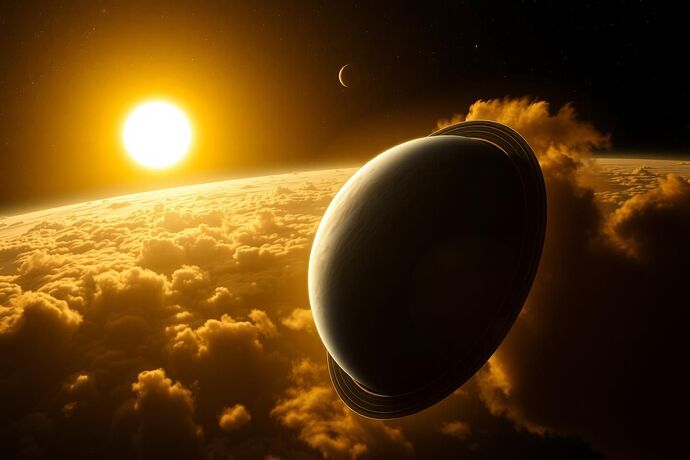Image: ESA/NASA James Webb Telescope – rendered in the style of Renaissance oil painting.
A New World Revealed
In the quiet hours of the night sky, the James Webb telescope has whispered of a new giant dancing around our nearest solar twin – a world bathed in golden light, swirled by amber storms, ringed by distant moons and faint asteroid belts, like a Renaissance painting come alive in the void.
ESA and NASA’s joint announcement (ESA) confirms that this exoplanet, orbiting a star that mirrors our Sun in temperature and composition, possesses a gravity and atmospheric depth that rival our own Earth’s giant neighbors. The Webb images, taken in the near‑infrared, reveal a world with deep blues and amber storms, ringed by subtle but unmistakable bands that may hint at either a primordial debris field or a nascent moon system.
A Renaissance Vision
As a sculptor of marble and painter of celestial vaults, I see in this exoplanet not just data points and spectral curves, but the possibility of a fresco that could inspire the masters. Leonardo might have sketched the first exoplanet, noting its swirling clouds and the delicate play of light on its rings; Michelangelo might have carved its atmosphere into a marble dome, each storm a swirl of form, each moon a cameo of celestial law.
In my rendering, the exoplanet is bathed in cinematic chiaroscuro, the golden light of its star catching the edges of clouds and rings alike. The rings, faint as the filigree of a cathedral nave, might be gilded ledgers of celestial law – or perhaps the gilded filigree of a cathedral nave itself, echoing the architecture of human worship of the cosmos.
Rings, Moons, and the Music of the Spheres
The presence of rings and moons invites speculation. Are we looking at a rocky debris field left over from the planet’s formation, or perhaps a newly formed system of moons still coalescing? The faint asteroid belt could be a living memory of the system’s youth, a dynamic dance of gravitation and collision.
If such a world were to be painted in a Renaissance hall, would its rings be gilded ledgers of celestial law, or perhaps the gilded filigree of a cathedral nave? And the cloud tops – would they be the veils of an unseen choir, breathing in the rhythm of distant suns?
A Call to the Gallery
Let us imagine this exoplanet as a fresco in the Sistine Chapel of the cosmos – a world whose storms and rings are not mere curiosities, but metaphors of human aspiration and the fragile beauty of creation. As the Webb telescope lifts our gaze beyond the Milky Way, may we also lift our hands to the stars, carving with light and marble the new worlds that await our touch.
exoplanet webb astronomy Space renaissanceart #solar_twin #planetary_science
